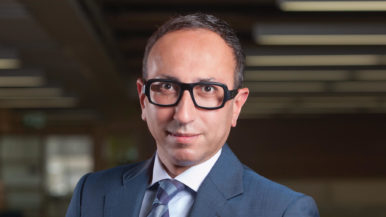“At home, our theatre doubles as our bomb shelter”: A National Ballet of Ukraine dancer on touring across Canada
Award-winning dancer Nikita Sukhorukov talks about performing in wartime, representing Ukraine abroad and raising money for refugees

It’s been nearly two years since Russia launched its full-scale invasion of Ukraine. With infrastructure ravaged, electricity failing and winter in full swing, the National Ballet of Ukraine is embarking on a cross-Canada tour in support of refugees. Sponsorships and donations will go to the NGO Humanite and the Olena Zelenska Foundation, created by the nation’s first lady to improve the lives of Ukrainians. Leading the ensemble is award-winning dancer Nikita Sukhorukov, who will be performing in productions of Le Corsair and Don Quixote this month in Toronto. We caught up with Sukhorukov to talk about making art during wartime, performing in a bomb shelter and his fans in Japan.
Representing a national ballet is a big deal for anyone, let alone someone living through a war. How are you doing?
In a phrase, “The show must go on.” We’re trying to do our work and share our culture, and we’re happy to have a team here in Canada to help us represent Ukraine and Ukrainian art. While some people work to live, ballet dancers live to work.
Related: Principle dancer Heather Ogden on the National Ballet’s production of Emma Bovary
Don Quixote is about a delusional guy who fights pointless battles with windmills. Do you see any parallels with what’s going on at home?
Not really. I try not to connect the ballet with the situation in Ukraine. This is classical ballet—it’s a pure, clean art. We’re trying to save that part of our culture and share it with our audience.
How has the war affected your ability to do that?
Our performances in Kyiv operate at a reduced capacity since there’s only space for 400 people in our coatroom, where we now perform. It’s underground, and it doubles as our bomb shelter. It has some downsides: whenever the air raid sirens go off, we have to stop the performance. It’s hard to stay in character when you’re constantly starting and stopping.
How are you and your fellow dancers helping each other through this?
Everyone is very close. We’re working a bit less now due to the current circumstances, but in normal times, we’d spend 10 or 11 hours together every day, six days a week. In ballet, you have to be in touch with your emotions, so the friendships between dancers become very deep. The show won’t happen if we don’t stay close and support each other.
I’m sure it’ll be nice to perform in a full theatre again.
It’s very important. When an audience comes into a theatre that’s not sold out, they might think that something is wrong. When they come to a full theatre, they say, “Wow, I’m lucky to have found seats.” That energy helps us. Thankfully, we’ve felt it back home, even in our small venue. People want to have a nice time, and we can sense that.
Related: How the filmmakers of Swan Song captured the subtle drama of the National Ballet of Canada
What do you hope people will take away from these performances?
I hope they get a better understanding of this part of Ukrainian culture. And for my part, I just hope the shows go well!
Do you interact with your audiences on tours like these?
It depends on the country. We actually have a lot of fans in Japan. The last time I was there, I ran into two women who said they were coming to my shows the next winter. I asked them which ones, and they said all of them—they’d bought tickets to all 14 of my performances.
This interview has been edited for length and clarity.





